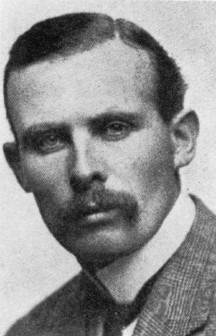Alvo von Alvensleben
This page, and a dozen as long, wouldn’t be enough to tell you the full story of the fascinating Alvo von Alvensleben, a German nobleman described in his Oct. 22, 1965, obituary in the Province as a man who “built one of the largest financial empires in the history of British Columbia.”
He began that empire in 1904 painting barns in Agassiz.

Photo: Who’s Who of Canada, 1913 edition
Von Alvensleben was born in Neu Gattersleben, Germany, in 1879. (It’s a small village, still around, west of Leipzig.) He came to B.C. in June of 1904 in preference to the military career his family had planed for him—but this was a man who had loftier ambitions than barn-painting.
Alvo was an enterprising gentleman. An example: He bought himself a shotgun and went out hunting ducks and geese, which he then sold—for 35 cents each—to the Vancouver Club. From the proceeds of this and other work, he financed an entry into the local real estate business. (In later years Alvo relished telling the story of how, when he sold his birds to the headwaiter at the Club’s back door, he was treated with cool contempt. But later, when he was wealthy and a prominent member of the club, the same headwater fawned over him.)
Alvo began the building of his fortune through his contacts in Germany. His family was a prominent one, and his father was a Count.
Alvensleben’s name pops up in the memoirs of one Martin Nordegg, in a book called The Possibilities of Canada are Truly Great, covering the years 1906-1924.
In the summer of 1909 Nordegg was in B.C. “I had been asked by one of my shareholders in Berlin, a German bank,” he writes, “to investigate the business of a German who had been living in Vancouver for a few years. He had induced German aristocrats to entrust him with large amounts of capital for investment. His name was Alvo von Alvensleben. His residence looked like a castle on the Rhine with turrets and bastions.
“In a back room of his office stood a desk . . . and behind the desk sat the German Consul. Alvensleben received me most courteously but did not introduce me to the Consul, which surprised me. When I asked him to introduce me, he said it was not worthwhile, because the Consul was only his employee.
“Alvensleben believed in the great future of real estate in Vancouver. In order to get capital from his aristocratic friends in Germany, he had worked out a most ingenious system. His brother, who resides in Berlin, was to find investors and be paid a commission from the capital he enlisted. Alvensleben gave as reference the German Consul in Vancouver. [emphasis added] The employee, as Consul, gave excellent references in regard to his employer. From the new capital coming in, Alvensleben paid a dividend on the first investments, and this of course was excellent propaganda.”
Alvensleben was not at all fazed by Nordegg’s visit and the reason for it. “He appeared very pleased, and said he welcomed such an investigation; he had heard of me before and hoped that I would be as successful as he was.”
Nordegg, despite strenuous efforts, was never able to get Alvensleben to give him details of his financial operations. “He said that it would give him much pleasure to do so. But he never did. Under these circumstances I had to find out something through banks and lawyers and the reports were most discouraging.”
So discouraging, in fact, that one of the German bank’s major investors sent out another investigator, a tougher customer than Nordegg proved to be. This man’s report was apparently “devastating.” It characterized the count as a daring gambler and speculator, and revealed the dividend system he had devised. The result: the investor couldn’t believe that a German aristocrat would behave in such a fashion . . . and announced that he would entrust him with another million!
In 1910 Alvensleben moved his family from the “castle” described by Nordegg to a lavish Kerrisdale estate called Edgewood, and lived there for four years. We know it today as the Crofton House School for Girls, at 3200 West 41st Ave. And why he had to leave it, and to leave Canada, and why he ended up in an internment camp in the state of Utah, will be told here in more detail soon.

![Crofton House ca. 1911 [Image: evelazarus.com]](https://vancouverhistory.ca/wp-content/uploads/2021/01/Alvo-Crofton-House-800x445.png)

![Foncie Pulice [Image: Vancouver Sun]](https://vancouverhistory.ca/wp-content/uploads/2021/01/8484241-390x205.jpg)
![Fountain Chapel Picnic, 1935 [Photo credit: Gibson Family]](https://vancouverhistory.ca/wp-content/uploads/2021/02/community-390x205.jpg)